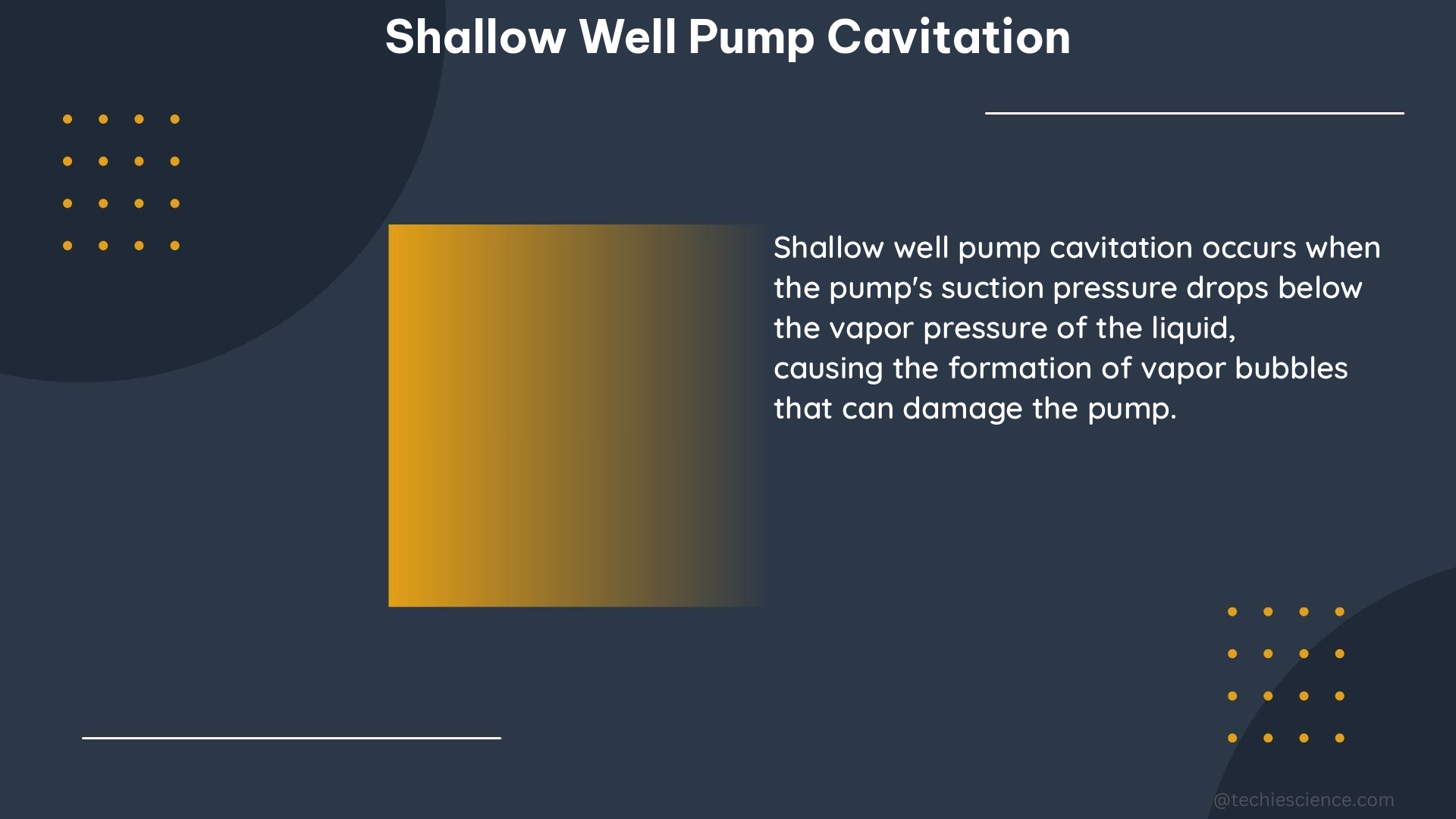Shallow well pump cavitation is a complex phenomenon that can lead to significant energy inefficiency and mechanical failures in water pumps, including shallow well pumps. This comprehensive guide will delve into the technical details of shallow well pump cavitation, providing you with a deep understanding of the underlying mechanisms, measurement techniques, and mitigation strategies.
Understanding Shallow Well Pump Cavitation
Cavitation in shallow well pumps occurs when the local pressure within the pump drops below the vapor pressure of the liquid being pumped. This sudden formation and collapse of vapor bubbles can cause significant damage to the pump’s impeller, shaft, and other components. The inception and development of cavitation in shallow well pumps can be investigated using various techniques, including:
-
Flow Visualization: High-speed photography and other flow visualization techniques can be used to observe the formation and collapse of vapor bubbles within the pump. This can provide valuable insights into the dynamics of cavitation and help identify the critical regions where it occurs.
-
Vibration Analysis: Cavitation can induce significant vibrations in the pump, which can be detected and analyzed using accelerometers and other vibration sensors. The frequency and amplitude of these vibrations can be used to diagnose the onset and severity of cavitation.
-
Acoustic Emission Monitoring: The collapse of vapor bubbles during cavitation can generate high-frequency acoustic emissions, which can be detected and analyzed to monitor the cavitation process.
Quantifying Shallow Well Pump Cavitation

Researchers have developed various techniques to quantify the performance of shallow well pumps under cavitation conditions. One such study, “Research on the Law of Head Loss of Jet Pumps in the Cavitation,” investigated the head losses in different sections of a jet pump by controlling the cavitation number (σ) and the secondary flow rate. The study found that the head losses in the jet pump increased as the cavitation number decreased, indicating a direct correlation between cavitation and head loss.
Another study, “Prediction of Cavitation Evolution and Cavitation Erosion on Centrifugal Pump Blades by the DCM-RNG Method,” used numerical simulations and experimental verification to analyze the cavitation performance of a centrifugal pump. The study found that the simulated head was 36.39 m, and the experimental result was 35.71 m, with a relative error of only 2%, demonstrating the high reliability of the simulation approach. The study also obtained the cavitation performance curve of the test pump, which showed that the net positive suction head (NPSH) was about 3 m when the head dropped by 3%, indicating the critical state of cavitation in the pump.
Measuring Shallow Well Pump Cavitation
The cavitation performance curve is a crucial tool for evaluating the cavitation performance of a shallow well pump. This curve plots the pump’s head or efficiency against the net positive suction head (NPSH), which is the difference between the absolute pressure at the inlet of the pump and the vapor pressure of the liquid being pumped. A low NPSH can lead to the onset of cavitation, which can cause significant damage to the pump.
To measure the cavitation performance of a shallow well pump, the following steps can be followed:
-
Determine the Vapor Pressure: The vapor pressure of the liquid being pumped (typically water) must be determined, as it is a critical parameter in calculating the NPSH.
-
Measure the Inlet Pressure: The absolute pressure at the inlet of the pump must be measured, typically using a pressure gauge or transducer.
-
Calculate the NPSH: The NPSH is calculated as the difference between the inlet pressure and the vapor pressure.
-
Measure the Pump Performance: The pump’s head or efficiency must be measured over a range of flow rates and NPSH values to generate the cavitation performance curve.
-
Analyze the Cavitation Performance Curve: The cavitation performance curve can be used to identify the critical NPSH value at which the pump’s performance begins to degrade due to cavitation.
Mitigating Shallow Well Pump Cavitation
Once the cavitation performance of a shallow well pump has been characterized, several strategies can be employed to mitigate the effects of cavitation:
-
Increase the NPSH: Increasing the NPSH can be achieved by increasing the inlet pressure, reducing the vapor pressure (e.g., by cooling the liquid), or by modifying the pump’s design to reduce the pressure drop at the inlet.
-
Optimize the Pump Design: Computational fluid dynamics (CFD) simulations and other design optimization techniques can be used to modify the pump’s impeller, volute, and other components to reduce the risk of cavitation.
-
Implement Cavitation Detection and Monitoring: Continuous monitoring of the pump’s vibration, acoustic emissions, or other parameters can help detect the onset of cavitation and trigger preventive maintenance or operational adjustments.
-
Maintain Proper Operating Conditions: Ensuring that the pump is operated within its recommended flow rate, pressure, and temperature ranges can help minimize the risk of cavitation.
By understanding the technical details of shallow well pump cavitation and applying the appropriate mitigation strategies, you can ensure the reliable and efficient operation of your shallow well pumping system.
Reference:
- Research on the Law of Head Loss of Jet Pumps in the Cavitation, https://pubs.acs.org/doi/10.1021/acsomega.1c06895
- Prediction of Cavitation Evolution and Cavitation Erosion on Centrifugal Pump Blades by the DCM-RNG Method, https://www.ncbi.nlm.nih.gov/pmc/articles/PMC8608526/
- What Is Pump Cavitation and How Can It Affect Your Well?, https://www.actionwellandpump.com/what-is-pump-cavitation-and-how-can-it-affect-your-well
- Cavitation analysis through CFD in industrial pumps: A review, https://www.sciencedirect.com/science/article/pii/S2666202723002215
- Cavitation diagnosis for water distribution pumps: An early-stage approach combing vibration signal-based neural network with high-speed photography, https://www.sciencedirect.com/science/article/abs/pii/S2213138822009675

The lambdageeks.com Core SME Team is a group of experienced subject matter experts from diverse scientific and technical fields including Physics, Chemistry, Technology,Electronics & Electrical Engineering, Automotive, Mechanical Engineering. Our team collaborates to create high-quality, well-researched articles on a wide range of science and technology topics for the lambdageeks.com website.
All Our Senior SME are having more than 7 Years of experience in the respective fields . They are either Working Industry Professionals or assocaited With different Universities. Refer Our Authors Page to get to know About our Core SMEs.